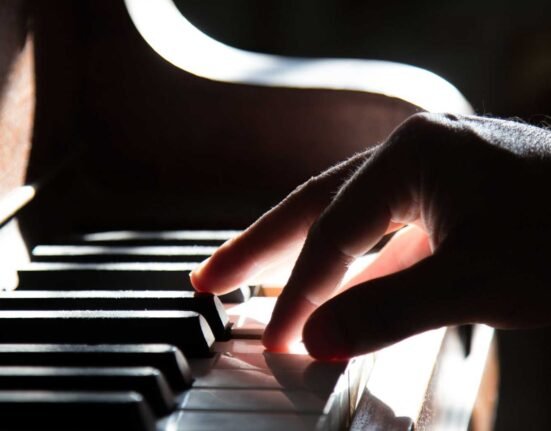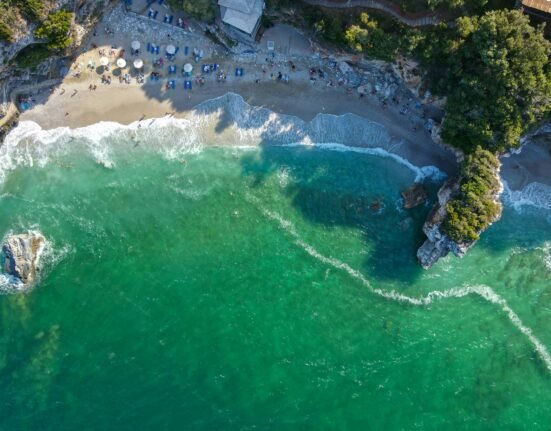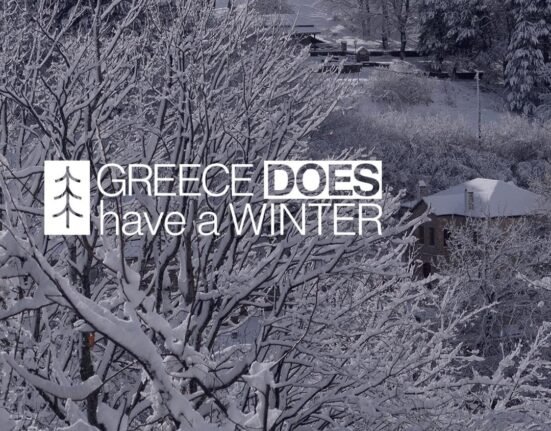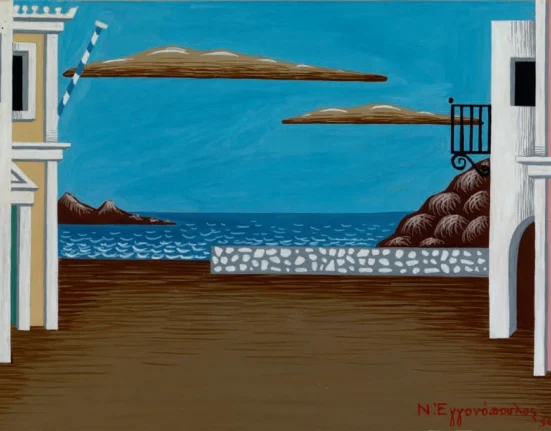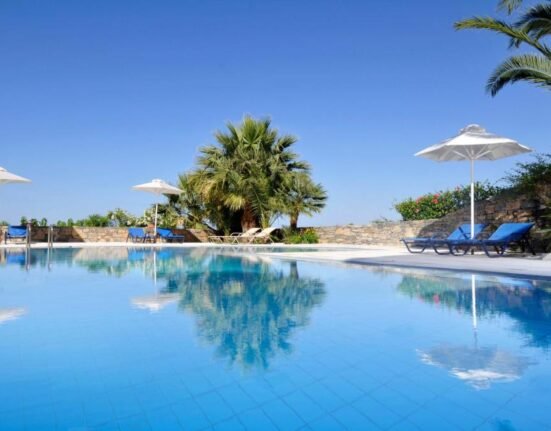Why Trikala is a Top Destination for Christmas
Trikala, a picturesque city in central Greece, transforms into a winter wonderland during the Christmas season, drawing visitors from across the country. At the heart of its festive charm is the renowned “Mill of the Elves” (Mylos ton Xotikon), one of Greece’s largest Christmas theme parks. Set within the grounds of a historic flour mill dating back to 1884, the park seamlessly blends tradition with modern festivity, offering elaborate decorations, festive activities, and a wide range of attractions, making it an ideal destination for families and those seeking a truly memorable holiday experience.

every year to welcome the elves.

This year, the Mill of the Elves has been enhanced with new attractions and activities, ensuring a fresh and exciting experience for both first-time visitors and returning guests. The theme for this year revolves around a magical new story featuring extraordinary cats who take center stage in the festive adventure. These are no ordinary cats—they are talented performers with unique abilities, including acrobatics, magic, dance, painting, and even singing.
The enchanting tale begins on a cold winter night when the elves, busy preparing for the holiday festivities, hear a strange noise outside the Mill’s large wooden door. To their surprise, they find cats wearing Christmas hats and jingling bells! What happens next? Well, that’s for you to discover as you embark on this magical adventure.
The Christmas Park and Mill of the Elves are open daily with free entry from November 29, 2024, to January 5, 2025, from 10 AM to 10 PM. Whether you’re enjoying the FunPark, skating on the Ice Rink, or participating in various games and activities, there’s something for everyone to enjoy.
A major highlight of the season is the lighting of the Christmas tree, which took place on November 27th, marking the beginning of the holiday festivities. This tree is the tallest natural Christmas tree in Greece, a true symbol of the city’s transformation into the “Capital of Christmas.” The spectacular lighting ceremony was just the beginning, as the city is beautifully decorated with twinkling lights along the streets and festive performances in the squares, creating a magical atmosphere that captivates visitors of all ages.
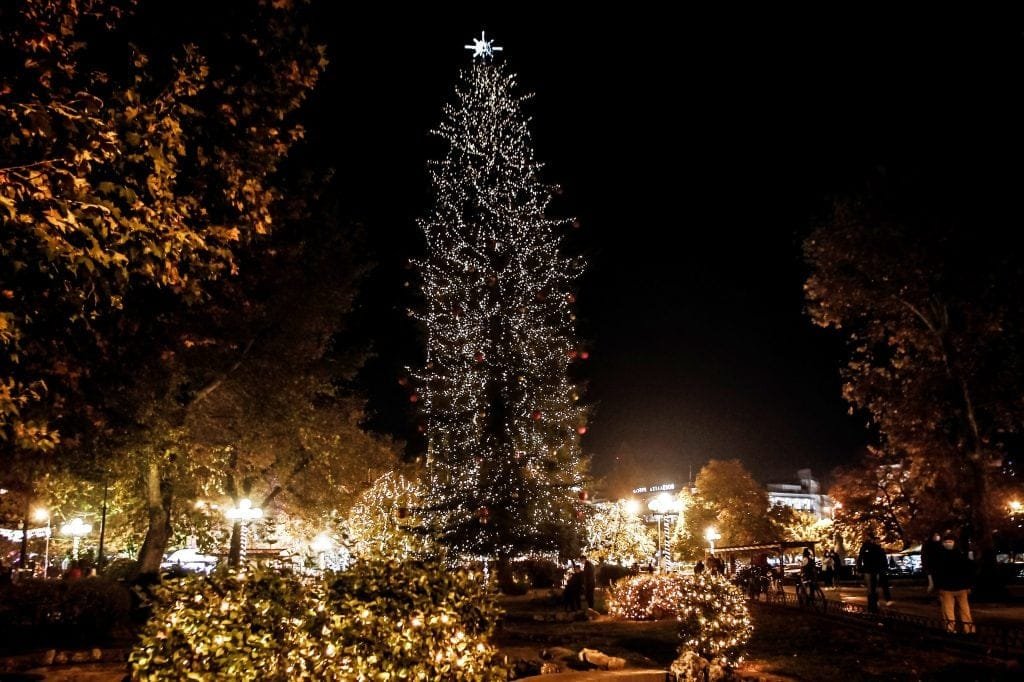
a true symbol of the city’s festive spirit. Image Credit: trikalaevents.gr
Trikala is also renowned for its commitment to sustainability and modern urban planning. With its flat terrain and well-designed streets, the city is easy to explore on foot or by bicycle. The Litheos River, the birthplace of Asclepius, the ancient Greek god of healing, runs through the heart of the city, offering scenic pathways along its banks. During the Christmas season, these paths are beautifully illuminated with thousands of lights. Whether cycling or strolling, the festive atmosphere around the river and in Trikala’s lively squares creates the perfect setting to experience the magic of the holidays.
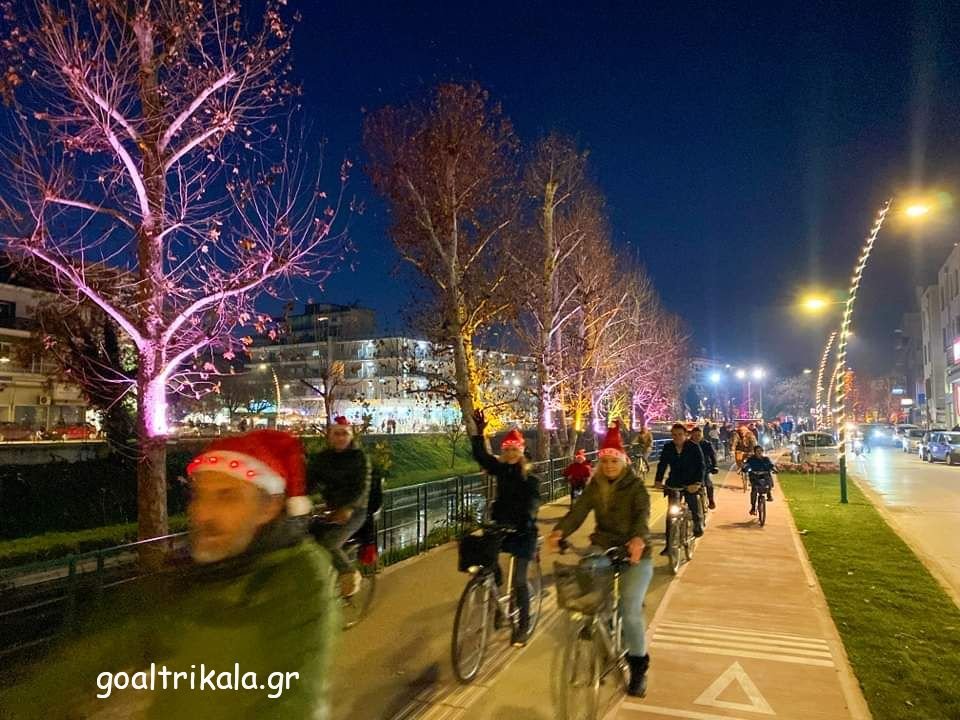

Why Trikala is Worth Visiting Anytime
Beyond Christmas, Trikala is a city that offers much more to explore throughout the year. Its rich history, beautiful architecture, and modern conveniences make it a top destination for any season.
The Fortress of Trikala and Its Iconic Clock Tower
The Fortress of Trikala is a historic Byzantine monument located on the northeastern side of the city. Built in the 6th century by Emperor Justinian I on the ruins of the ancient Trikka acropolis, the fortress reflects the city’s long-standing strategic importance. Over the centuries, it was extensively renovated by the Ottomans, who used it as a stronghold, adding layers to its rich history.
The fortress showcases typical Byzantine defensive architecture, featuring five towers and numerous small embrasures. It is divided into three levels, separated by cross walls. The main entrance, on the western side, is notable for its semicircular stone arch and iron gate, which lead to a small fountain and bridges within the fortress complex.
On the second level, visitors can find the central 33-meter tower, which is crowned by the iconic Trikala Clock, a symbol of the city. Originally installed by the Ottomans in the 17th century, the clock was replaced in 1936. The tower remains one of the fortress’s highlights, offering a panoramic view of the city and surrounding landscapes.
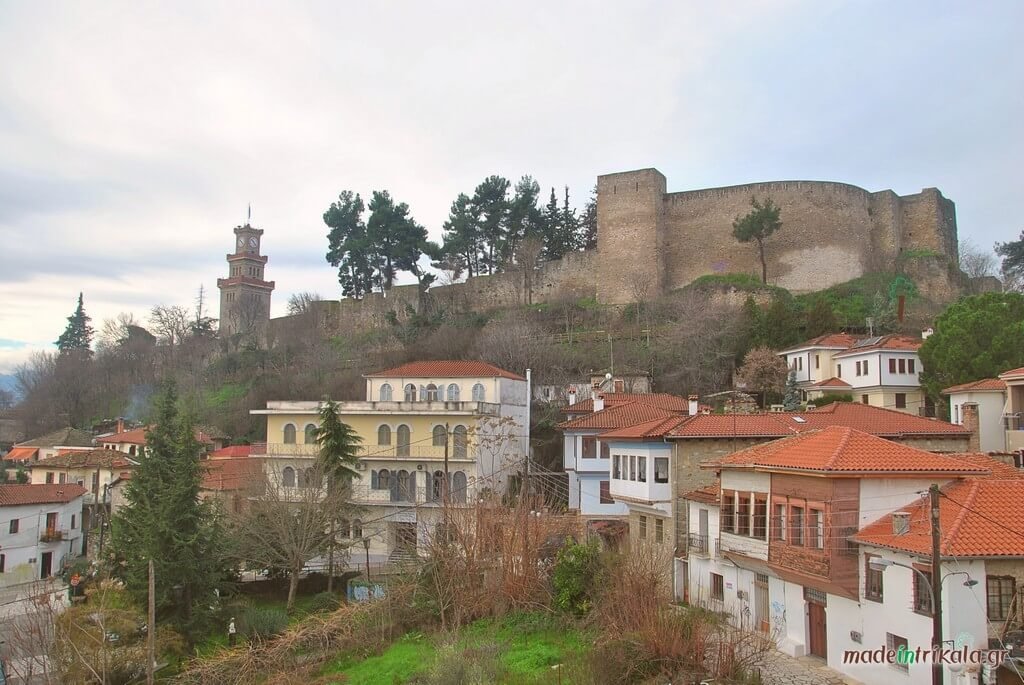

Image Credit:archaiologia.gr
The Old Town: Varoussi and Old Manavika Districts
The Old Town of Trikala consists of two neighborhoods: Varoussi and Manavika. Varoussi, nestled on the foothills of the fortress hill, was the city’s aristocratic district until 1930. Known for its elegant mansions built between the 17th and 19th centuries, Varoussi reflects the city’s cultural and economic flourishing during this period, driven by the growth of trade, crafts, and small industries. The district is characterized by its beautiful architecture, with elaborate rhythms and long marquees, and is home to some of the city’s oldest churches, which are closely situated, further highlighting the area’s historical significance.
Manavika, an extension of Varoussi, is known for its lively atmosphere, home to some of the city’s best taverns and cafes. A key highlight is a 3D mural, created in 2006, that captures scenes of daily life in the old town, including a depiction of the renowned Greek musician Vassilis Tsitsanis. Spanning 150 square meters, the mural was designed by the French artists from CitéCréation, experts in “architectural trompe-l’œil.” Part of an urban renewal initiative funded by the Thessaly Regional Operational Program, it skillfully blends past and present, offering a nostalgic view of Trikala’s vibrant history.

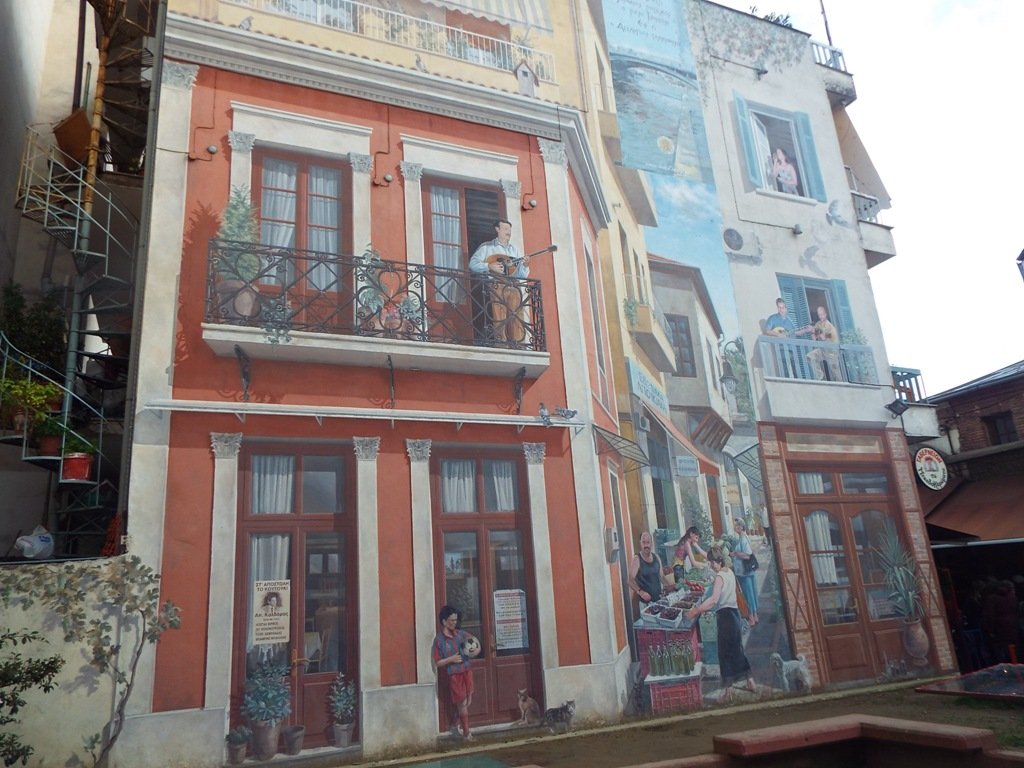
.
Litheos River: Central Bridge of Trikala and Asclepius Bridge
The Litheos River, a serene tributary of the Pinios River, flows gracefully through the heart of Trikala, shaping both the landscape and the identity of the city. Known as the “River of Forgetfulness,” its name is derived from the Greek word lethe, meaning forgetfulness, and is steeped in mythical significance, connected to the river Lethe in Greek mythology, which was said to erase memories. Though its name suggests oblivion, the Litheos River leaves an unforgettable impression on all who encounter it.
Dividing the city in two, the Litheos is spanned by thirteen bridges, each contributing to the river’s charm and historical character. Among them, the Central Bridge of Trikala stands out as a testament to the city’s rich architectural heritage. Built in 1888 by French engineers, this bridge serves as a pedestrian walkway, connecting the central square to the lively Asklipiou street. Its elegant design, reminiscent of the bridges of the Seine, offers a harmonious blend of history and modernity.
Just a short distance away, the Asclepius Bridge, constructed in 1998, celebrates Trikala’s most famous son, the ancient physician-god Asclepius. A striking bronze statue of Asclepius, holding a rod entwined with a serpent, stands proudly at the center of the bridge, symbolizing the timeless link between medicine and the city. On one side of the bridge, a powerful artificial waterfall cascades into the riverbed below, creating a captivating sight, especially when illuminated in the evening. The wide surface of the bridge functions as a small square and relaxation spot, offering a serene vantage point over the river with a view of the Central Bridge.
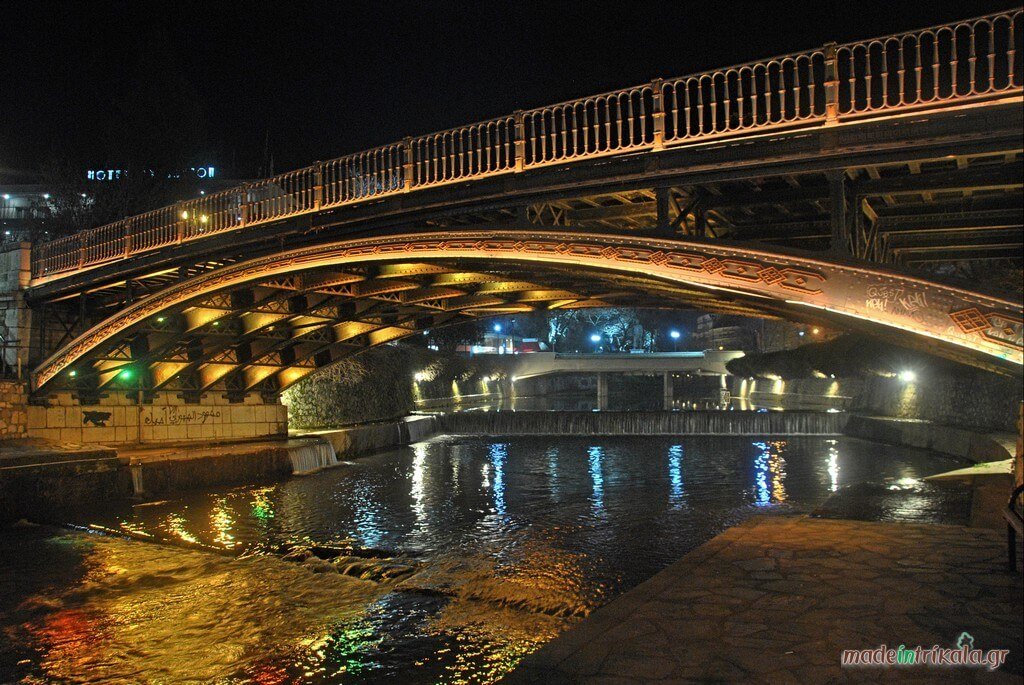
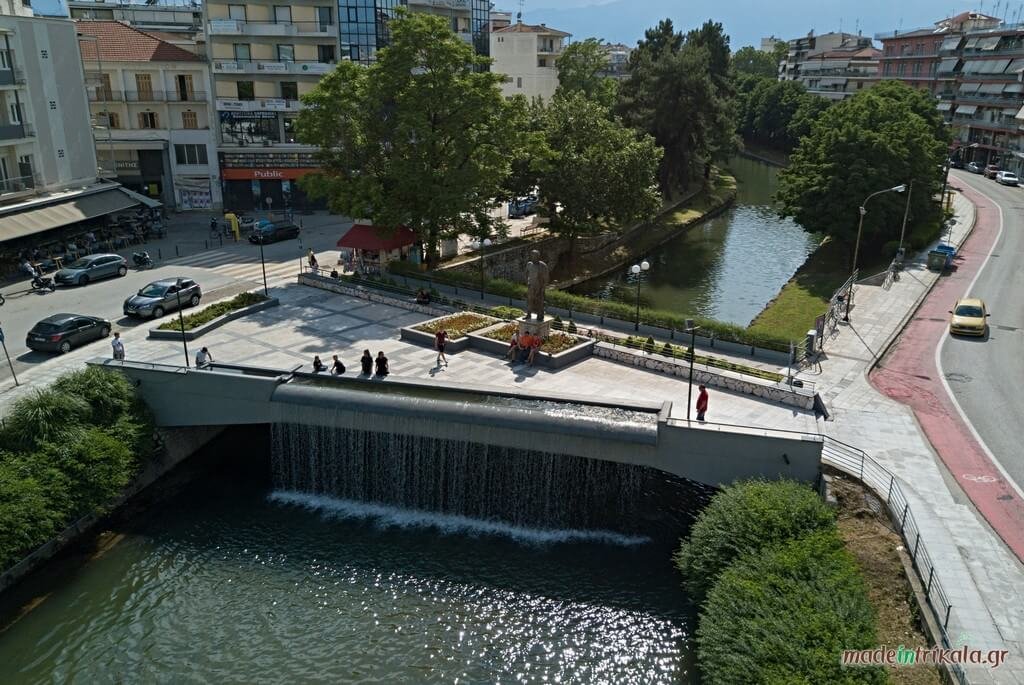
Image Credit: madeintrikala.gr
Osman Shah Mosque (Kursum Mosque)
The Osman Shah Mosque, also known as the Kursum Mosque, is the last surviving Ottoman mosque in Trikala, a city once filled with many such structures. Its name, “Kursum” meaning “lead” in Turkish, is derived from the lead-covered dome that crowns the mosque. Built in the mid-16th century by the famous architect Sinan Pasha, it was commissioned by Prince Osman Shah, the son of Sultan Suleiman, after he was healed from an illness in Trikala. Today, this historic monument is protected by UNESCO and functions as a cultural venue for exhibitions and events

A Taste of Trikala: Must-Try Delicacies from the Region
Spatula is a pudding-like dessert from Trikala, made with layers of light sponge cake, smooth crème, and either walnuts or almonds. The combination of the creamy filling and crunchy nuts gives it a distinct texture and flavor, making it a popular choice among locals.
Trikala Halva is similar to the one from Farsala but with a creamier texture and a richer flavor. Made with corn starch, sugar, melted clarified butter, and toasted almonds, it strikes a delicate balance between sweetness and texture. This dessert has become a must-have treat for visitors to Trikala, often taken home as a memorable souvenir.
Don’t leave Trikala without trying its unforgettable sausages—usually crafted from pork, sometimes mixed with beef. These sausages are renowned for their unique flavor, which comes from the addition of leek and aromatic herbs native to the region. They are an essential part of local culinary traditions, cherished by both residents and visitors alike. The distinctive flavor, created by the locally sourced ingredients, makes these sausages a must-try delicacy, offering a true taste of Trikala’s rich food heritage.
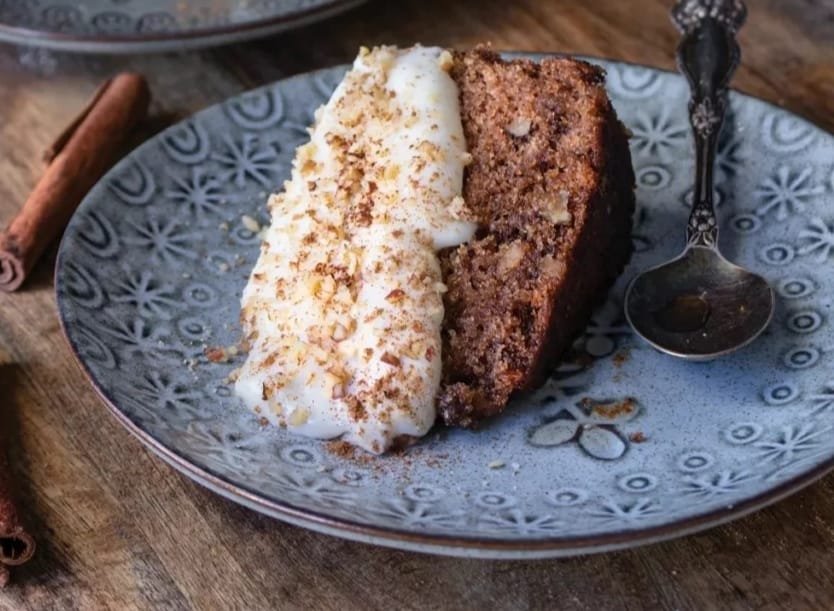
Image Credit: trikalatroll.gr

is renowned for its delicious Halva
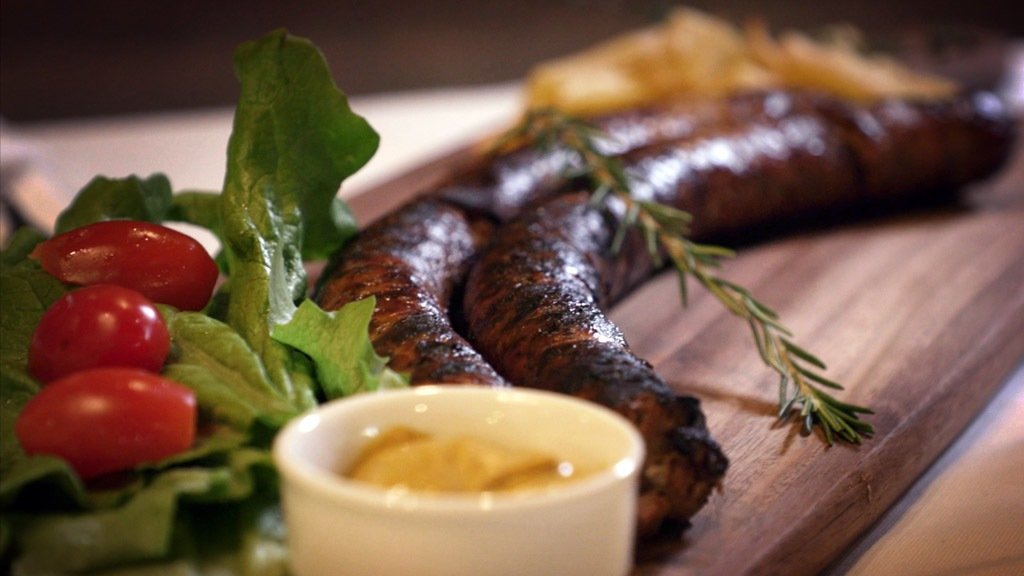
Image Credit: meteorisimo.com
To wrap things up, Trikala is undoubtedly the perfect Christmas destination, capturing the holiday spirit in the most magical way. With its twinkling lights and the enchanting Mill of Elves, it transforms into a winter wonderland that’s sure to charm visitors of all ages. Beyond the festive atmosphere, Trikala’s rich history and natural beauty make it a place full of discovery. From the serene paths along the Litheos River to the views from the Fortress of Trikala, the town offers experiences that linger long after your visit.
Trikala is also the ideal base for unforgettable one-day trips. You can explore Kalampaka and Meteora, where the monasteries seem to float high in the sky, offering a sense of serenity and wonder. Alternatively, you can journey to Elati and Pertouli, where nature takes center stage with its lush forests, majestic mountains, and the kind of tranquility that feels worlds away from city life.
But don’t rush off just yet! While these trips are worth every minute, we’ll be saving the juicy details for another article. Stay tuned for more adventures to uncover in and around Trikala—coming soon!




